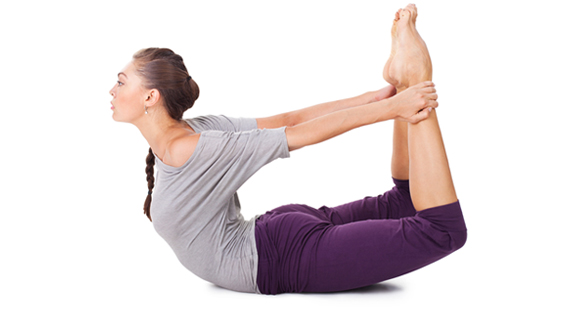In scientific terms, sleep is a state of altered brain activity that is quite different from the waking state. During sleep, our brain cells work more slowly but more intensively. This shows up on an EEG (a machine used to record brain activity) as electrical activity that is lower in frequency but higher in voltage. There are also physical changes in the body such as changes in eye movement and muscular tension. Further variations in electrical activity in the brain show when each stage of sleep begins and ends. Here are doctors’ tips to sleep better naturally.
Sleep Stage 1
Our breathing and heartbeat become regular, our muscles relax and our body temperature falls. We become less aware of external stimuli and our consciousness starts to withdraw from reality. The slightest noise is enough to wake you from this stage and you might think you haven’t been asleep at all. You will no doubt have experienced the sensation of falling suddenly, typical of this stage. We spend about 10 percent of the night either awake or in stage 1. Some people twitch during this stage. Stage 1 generally lasts between 13 and 17 minutes. In effect, stage 1 is the stage during which we fall asleep and, as such, it occurs only once during a night of uninterrupted sleep.
Sleep Stage 2
Sleep becomes deeper during this sleep stage and our muscles relax further. Physical sensations are dampened significantly and our eyes do not move. Electrical activity in the brain occurs at a lower frequency than when we are awake. About half of our total sleeping time is spent in stage 2. Stages 1 and 2 are known as the light-sleep phase. Together, they last for about 20–30 minutes. We return to stage 2 several times during the night.
Sleep Stages 3 and 4
We reach the first of our deep-sleep stages, stage 3, after approximately 20 to 30 minutes, and the second, stage 4, after about 45 minutes. Our body is now completely relaxed. We are more or less completely disconnected from reality. To wake someone from deep sleep, you need to make quite a lot of noise or shake them quite hard. Waking someone from stage 4 is almost impossible—it’s a bit like trying to wake a hibernating animal right in the middle of winter. This is the most restful part of the night’s sleep. Muscular activity decreases even further and our eyes do not move. Stages 3 and 4 make up about 20 percent of our time asleep, but this proportion decreases as we get older. Stages 3 and 4 are known as the deep-sleep phase. Is America in a sleep crisis? Here’s how our sleep debt is making us sick, stupid, and fat.
REM sleep (the dreaming sleep stage)
Between 80 and 100 minutes after falling asleep, the deep-sleep phase comes to an abrupt end, which is often accompanied by a change in sleeping position. Our sleep switches to stage 2 for a few minutes before the EEG graph makes an abrupt change within the space of a few seconds. This shows that REM sleep is beginning—our heart rate increases and breathing gets quicker. The electrical activity in the brain creates small, rapid movements in the EEG, similar to those seen when falling asleep. Our muscles are completely relaxed, but our eyes make quick, darting movements while remaining closed. This is where the phrase rapid eye movement (REM) comes from.
Men occasionally experience erections during this phase, and women may have increased blood flow to the genitals. The production of digestive juices increases. It is during REM sleep that we have most of our dreams. Here are 13 bizarre facts about dreams you never knew. For adults, REM sleep makes up about 20 percent of a night’s sleep. The percentage is considerably higher for infants and small children.
When healthy people are in a state of REM sleep, the muscles of our body are deeply relaxed. If it wasn’t for this we might act out our dreams, with potentially disastrous consequences. This is the most likely reason why the brain puts the body in this deep state of relaxation bordering on paralysis (known as atonia). However, when a person is suffering from some conditions, such as Parkinson’s disease, REM atonia does not occur and people can act out their dreams.
The Sequence of Sleep Stages
Our sleep follows a specific sequence of these different stages. We complete a sleep cycle and begin a new one approximately every 80 to 110 minutes, usually around 90 minutes. A night’s sleep begins with a light-sleep phase of varying duration, followed by the first deep-sleep phase of the night and a short REM phase. In the second half of the night, we spend a relatively shorter amount of time in deep-sleep phases while our REM phases tend to be longer. The final REM phase of the night can last for as long as 30 minutes or more. And then, we wake up.
The pattern of REM sleep changes as we grow older. During the first year of life, babies spend most of their time asleep in REM sleep. From the age of four, the proportion of REM sleep falls to about 20 percent of the night. People over the age of 60 spend only about 15 percent of the night in REM sleep.
With the exception of infants, people spend most of the night in the light-sleep phase. If the amount of time we sleep is reduced, it’s the light sleep phase that bears the brunt of the deficit, ensuring we still make it to the deep-sleep phases, which have the most restful effect. This is why some people can cut their sleeping time right down to a minimum of somewhere between four and six hours, depending on the individual, without losing too much of their capacity the next day.
Nevertheless, we need to spend some time in the light-sleep phase in order to reach the deeper sleep phases. It’s not possible to access deep sleep immediately after falling asleep. Good sleep takes time.
The Purpose of Sleep Stages
Each sleep phase serves a specific purpose for the body. The primary function of both our light-sleep and deep-sleep phases is to have a regenerative effect on various processes in the body. During the REM phase, the brain is almost as active as when we are awake. We need both deep sleep and REM sleep to properly process the impressions and memories of the day. The brain weighs up the information we have taken in while awake and organizes our memories, storing any important information in our long-term memory and discarding superfluous details.
This is why a good night’s sleep is vital for our mental capacity. If you get an adequate amount of sleep the night before an exam, including several deep-sleep and REM phases, you will be better able to recall the material you have studied.















